Issue Archive
Table of Contents
BLOOD COMMENTARIES
BLOOD SPOTLIGHT
Visualizing amyloidosis: the role of radionuclide imaging in systemic amyloidosis
In this Blood Spotlight, Anderson and colleagues highlight how advances in radionuclide imaging for light-chain amyloidosis and transthyretin amyloidosis mean this noninvasive modality should be incorporated into routine practice for diagnosis and management. The authors summarize the specificity and utility of different scanning techniques in relation to different types of amyloids and illustrate just how powerful their incorporation into the early diagnostic pathway of suspected cardiac amyloidosis can be, as well as their ability to assess organ responses.
CLINICAL TRIALS AND OBSERVATIONS
Phase 1/2 trial of anti-CD7 allogeneic WU-CART-007 for patients with relapsed/refractory T-cell malignancies
Clinical Trials & Observations
While chimeric antigen receptor (CAR) T-cell therapy is effective in several B-cell malignancies, its application against T-cell leukemia and lymphoma (T-ALL/LBL) is limited by the shared expression of CAR-targetable antigens in malignant and essential normal T cells, necessitating additional genetic manipulation. Ghobadi et al report results from a multicenter phase 1/2 study in patients with relapsed or refractory T-ALL/LBL who received 1 infusion of an allogeneic CD7-targeting T-cell product after lymphodepleting chemotherapy. After enhanced lymphodepletion, complete remissions rates are high and graft-versus-host disease uncommon, but long-term remissions require subsequent allogeneic transplantation, as CAR T-cell persistence is limited. This approach may be an effective bridge to allografting in patients with otherwise uncontrollable disease.
HEMATOPOIESIS AND STEM CELLS
An in vivo barcoded CRISPR-Cas9 screen identifies Ncoa4-mediated ferritinophagy as a dependence in Tet2-deficient hematopoiesis
TET2 is mutated in approximately one-third of clonal hematopoiesis (CH) cases and encodes a dioxygenase involved in active DNA demethylation; however, how its presence causes clonal advantage is unknown. Loke and colleagues deployed a barcoded lentiviral CRISPR-Cas9 screen in vivo in mice and reveal that ferritinophagy, a selective autophagic process mediated by the cargo receptor Ncoa4, supports the expansion of Tet2-mutant stem and progenitor cells by maintaining mitochondrial iron availability and oxidative metabolism. The authors’ work pinpoints a novel metabolic dependency in Tet2-deficient CH that may be exploitable as an early intervention.
Clinical and molecular features of immunodeficiency in patients with telomere biology disorders
Clinical Trials & Observations
Brief Report
Telomere biology disorders (TBDs) are caused by germ line mutations that interfere with telomere maintenance and present to hematologists with features of bone marrow failure, variable immunodeficiency, and lung, liver, and skin disease. Through retrospective analysis of a large series of adult patients with TBD, Bazzo Catto and colleagues uncover the extent of immune abnormalities caused by accelerated immune aging and T-cell lymphopenia, demonstrating that the depth of lymphopenia correlates with bone marrow failure, increase in infection risk, and worse survival, including the association of low T-cell counts with the development of solid tumors. The authors’ work enables clinicians to readily identify those at highest risk of these manifestations.
IMMUNOBIOLOGY AND IMMUNOTHERAPY
RhoA GAP Myo9b regulates β2-integrin activity and neutrophil recruitment during murine acute kidney injury
Appropriate neutrophil recruitment to inflamed tissues depends on β2-integrin activity, but how that is fine-tuned is unclear. Cappenberg and colleagues examine the role of the RhoA GTPase-activating protein (GAP) myosin-IXb (Myo9b) in regulating neutrophil β2-integrin activity and recruitment. The authors combined in vitro and in vivo studies of inflammation to demonstrate that Myo9b is a crucial modulator of several key signaling pathways in neutrophils and is required for an adequate immune response triggered by chemokines and selectins.
LYMPHOID NEOPLASIA
A comprehensive genetic study of classic Hodgkin lymphoma using circulating tumor DNA
Clinical Trials & Observations
Circulating tumor DNA (ctDNA) analyses have potential advantages in diseases such as classical Hodgkin lymphoma (cHL), where the tumors are multifocal and the pathological Reed-Sternberg cells typically make up only a minor component of the lymphoma mass. Exploiting this modality, Pirosa et al provide novel, complex insights into cHL genetics, proposing that genetic subgroups are driven by mechanisms of genetic instability and not by the functional associations of identified DNA alterations. The authors’ findings also inform identification of neoantigens and provide preliminary data suggesting that ctDNA measurement can help resolve the prognosis when posttherapy positron emission tomography imaging is equivocal.
A multiomic analysis of Waldenström macroglobulinemia defines distinct disease subtypes
Waldenström macroglobulinemia (WM) is an immunoglobulin M–secreting lymphoplasmacytic lymphoma thought to arise from clonal expansion of memory B cells (MBCs) driven by activating MYD88 mutation. In a single-cell multiomic study of MYD88-mutated WM, Gagler et al extend our understanding of its pathogenesis, identifying that WM includes 2 disease subtypes reflecting variable capacity for plasma cell (PC) differentiation: MBC-like and PC-like. MBC-like have more CXCR4 mutations and increased B-cell receptor signaling, whereas PC-like have more del(6q) and increased NF-kB activity, the transcriptional dysregulation leading to these distinct differentiation blocks. These data set the scene for improved clinicopathological correlation and better deployment of targeted therapies.
MYELOID NEOPLASIA
Posttranscriptional depletion of ribosome biogenesis factors engenders therapeutic vulnerabilities in NPM1-mutant AML
Nucleophosmin-1 (NPM1) mutation is the most frequent driver genetic alteration in adult acute myeloid leukemia (AML). Using AML cell lines, genetic screens, and murine models of NPM1-mutated AML, Damaskou and colleagues identified disordered ribosome function as a pathogenic consequence of NPM1 mutation and that targeted disruption of ribosome biogenesis by small molecule inhibitors of RNA polymerase I, including low-dose actinomycin-D, is an effective antileukemic strategy, especially when combined with the BCL2 inhibitor venetoclax. These insights suggest future directions for clinical trials in relapsed NPM1-mutated AML.
-
Cover Image
Cover Image
![issue cover]()
Transmission electron microscopy of
Tet2 -knockout (KO) hematopoietic stem progenitor cells (HSPCs). Increased cristae density inTet2 -KO HSPCs highlights heightened mitochondrial activity and dependence on iron flux, which were uncovered with the use of an in vivo CRISPR-Cas9 screen. See the article by Loke et al on page 1174. - PDF Icon Front MatterFront Matter
- PDF Icon Table of ContentsTable of Contents
- PDF Icon Editorial BoardEditorial Board
Advertisement intended for health care professionals
Email alerts
Advertisement intended for health care professionals





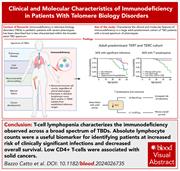
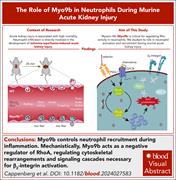
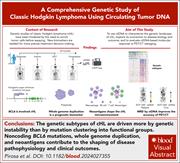
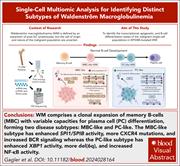
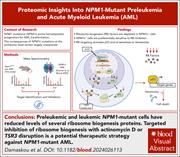

CART-007: a license to kill
Clinical Trials & Observations